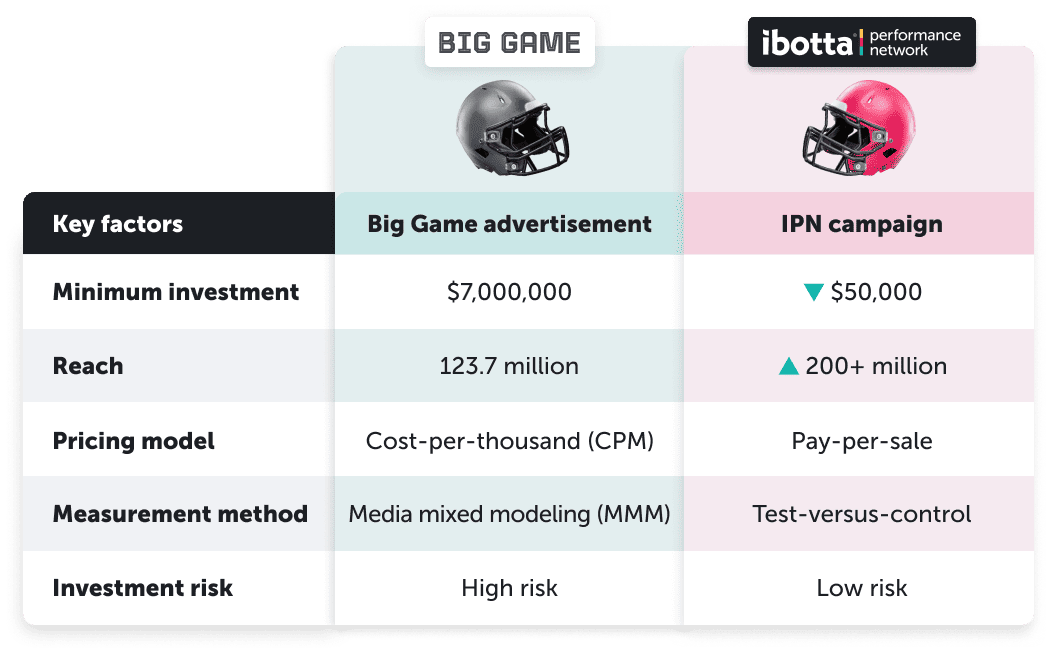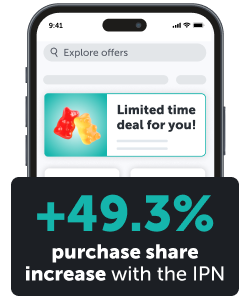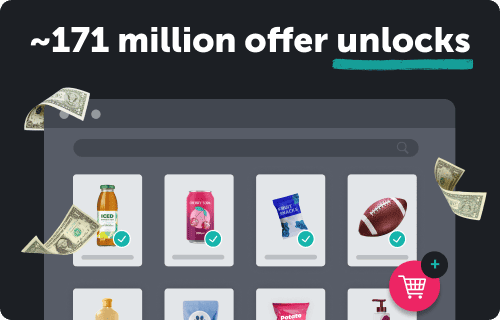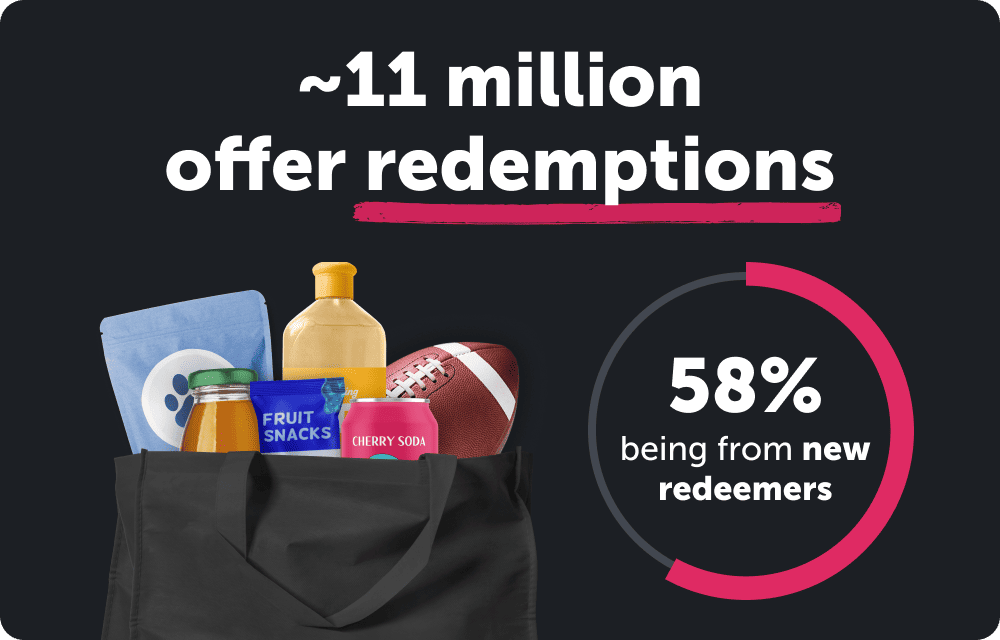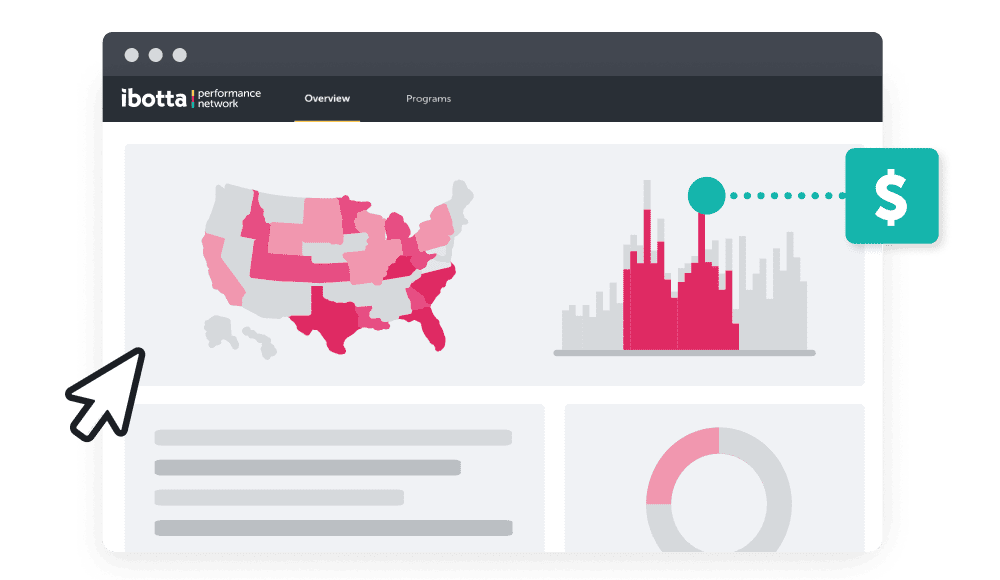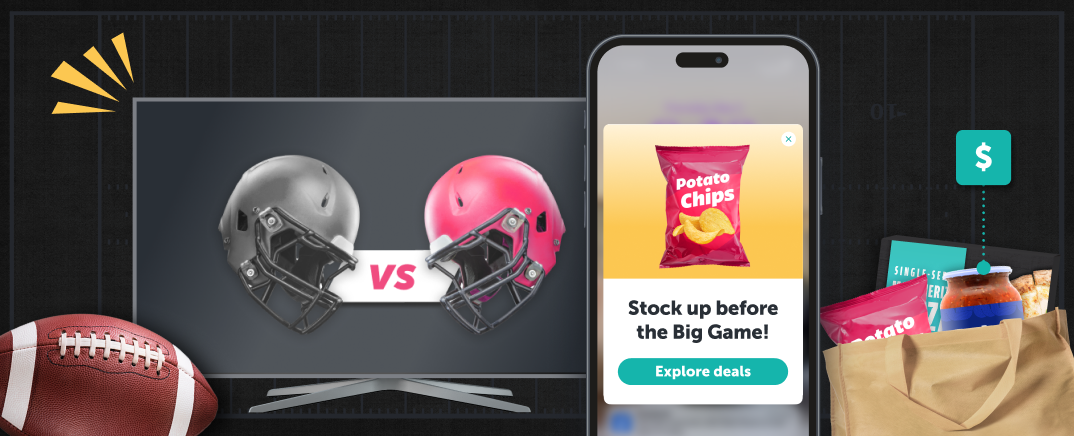
January 14, 2025
The Big Game: The pinnacle of advertising, where brands shell out millions for 30 seconds of airtime to capture the attention of over 100 million viewers. But, in a world of fragmented attention and ad-weary consumers, is a $7 million TV advertisement still worth the investment?
With innovations in other promotional channels — like those offered by the Ibotta Performance Network (IPN) — answering that question with a “yes” becomes much more difficult. Let’s explore how the IPN is transforming advertising from being a fleeting moment of fame into a sustained engine for growth and discover what $7 million can do when invested in a powerful combination of pay-per-sale efficiency and AI-driven optimization.
Pre-game statistics
Running an advertisement during the largest football game of the year is certainly not cheap. According to Statista, the average price was $7 million for a 30-second ad placement in 2023 and 2024. And this is just the starting price for a 2025 advertisement, according to a report by Variety. It’s important to note that this price tag only accounts for the placement of the advertisement itself. The cost of creating the commercial, including talent fees, filming, and marketing can add significantly to the overall expense.
Despite the high cost, there are good reasons for brands to justify the placement. The event provides a significant reach, as it draws in one of the largest television audiences of the year. Nielsen reported that 2024’s contest drew in 123.7 million average viewers. With all these viewers tuned in, an advertisement can generate significant brand exposure and recognition. But, all of these eyes pose huge risks for brands too.
Advertising challenges
A Big Game advertisement needs a truly creative and memorable concept to stand out from the heavy competition. Because of that challenge, some advertisements don’t get much publicity. Not making a lasting impact is a tough pill to swallow when investing such a large amount of time and money. Even worse, if an ad misses the mark it may receive intense scrutiny and cause damage to a brand’s reputation. The diverse audience poses a risk that the message may be misinterpreted or even offend certain viewers. And the power of social media can amplify those opinions more than ever.
That’s not the only difficulty brands encounter after running their campaigns. Measuring traditional media can be an arduous process and often requires Marketing Mix Modeling (MMM). This method can be effective for measuring various marketing activities, but it requires an extensive amount of historical data and statistical expertise to conduct. Even when analyzed correctly, it can still be difficult to confidently attribute sales from TV viewership specifically. Not to mention, it’s another large expense brands have to factor in. For these reasons, brands are turning to digital promotions to achieve their goals and be fully confident in the impact their marketing efforts have.
Post-game analysis
To understand and compare the success of a Big Game advertisement to investing in the IPN, we tracked down 10 brands that have averaged $7 million in spend within the past year. With an average spend of $7 million, we see approximately 171 million unlocks, which is far higher than the average viewers seen in February 2024’s game. Unlocks show when customers add an offer prior to redemption. This serves as a more sophisticated version of an impression statistic by displaying direct intent to purchase.
What can a $7 million investment with the IPN get you?
Brands who partner with the IPN get access to redemption data too. A redemption is counted when a customer has unlocked an offer and their product purchase has been verified. From a $7 million average investment, we see nearly 11 million redemptions, 58% of which are new redeemers. Therefore, brands are not only increasing redemptions but bringing in millions of new customers as well. These types of metrics are much more difficult to attribute to TV advertising.
This is yet another reminder that promotions are no longer about putting eyes on screens. Brands are increasingly seeking ways to promote their products that are not only easily measurable but incredibly effective at driving results.
The IPN difference
The Ibotta Performance Network offers unparalleled scale compared to traditional media. Brands gain access to more than 200 million consumers when running promotions through the IPN. With just a $50k minimum investment, brands can leverage first-party omnichannel purchase data to better understand consumers, customize campaigns, and drive incremental sales. Brands also get the ability to target, optimize, and report their campaigns in real time.
